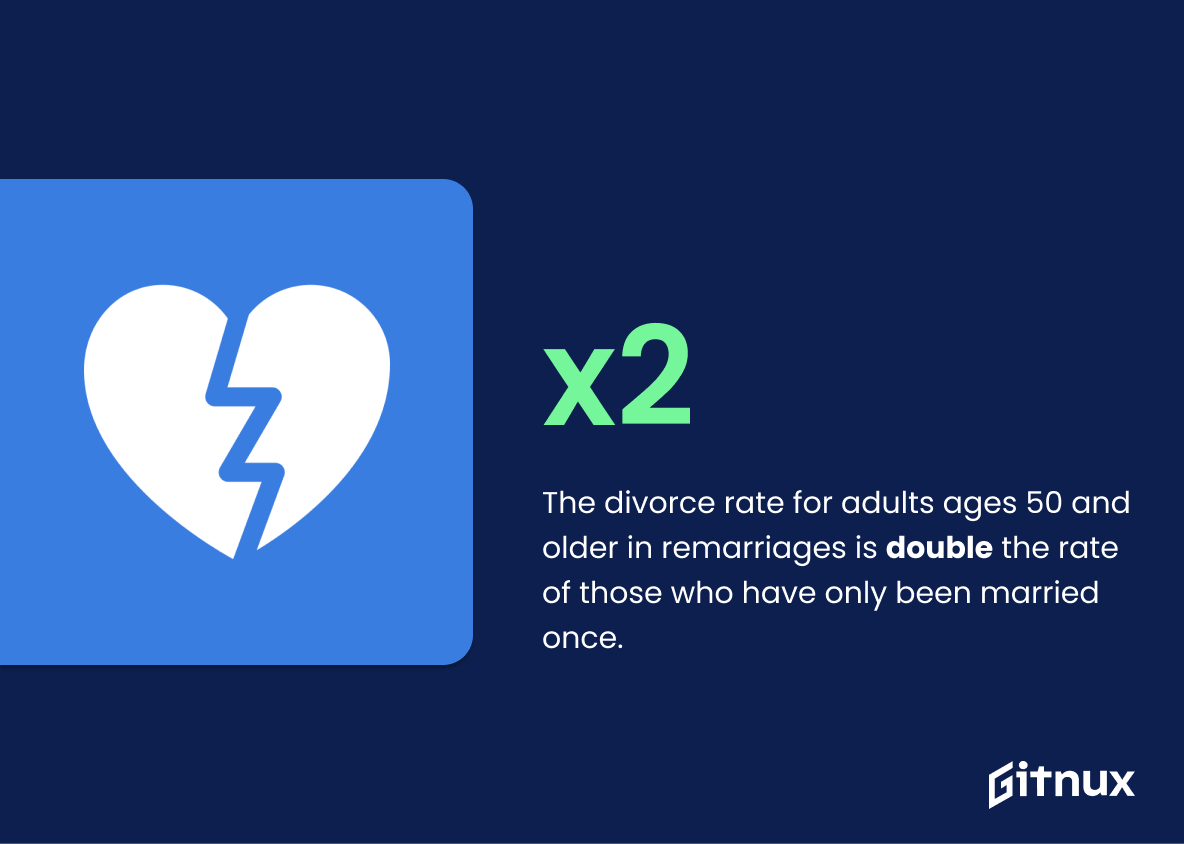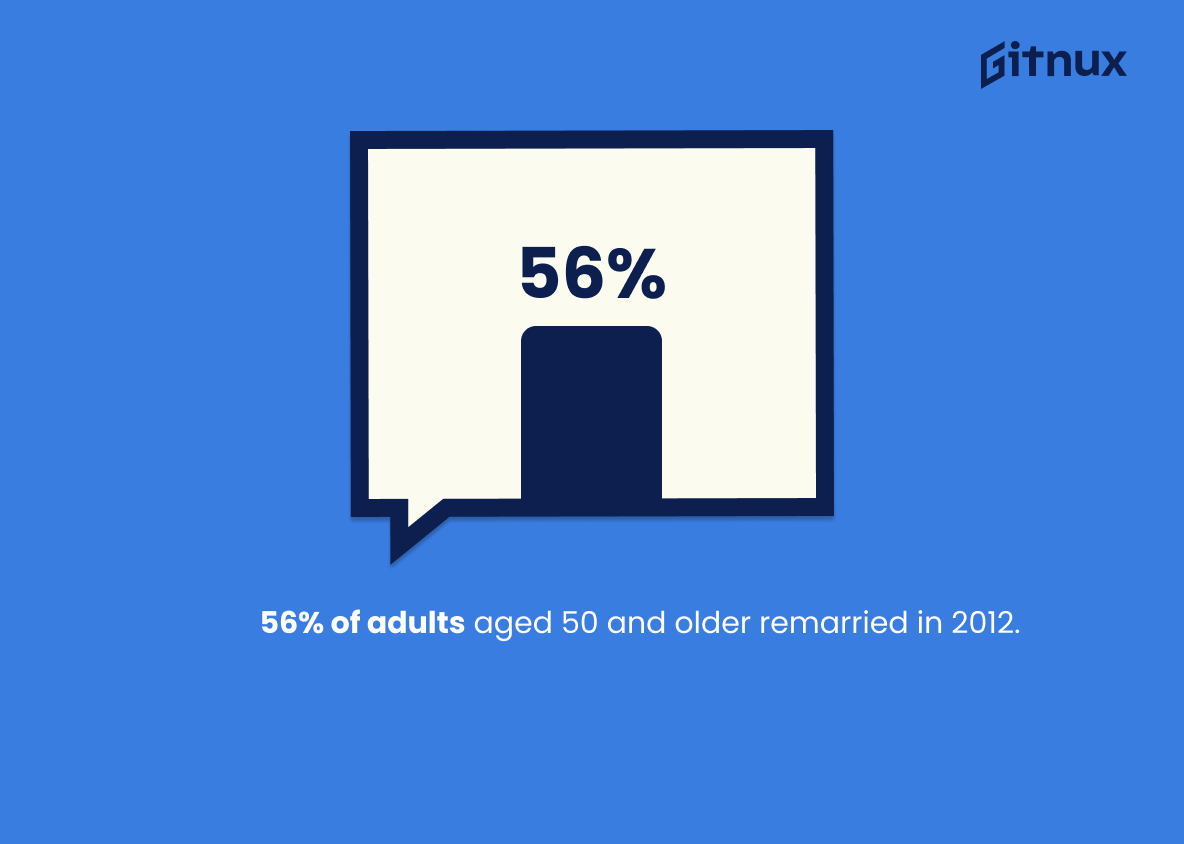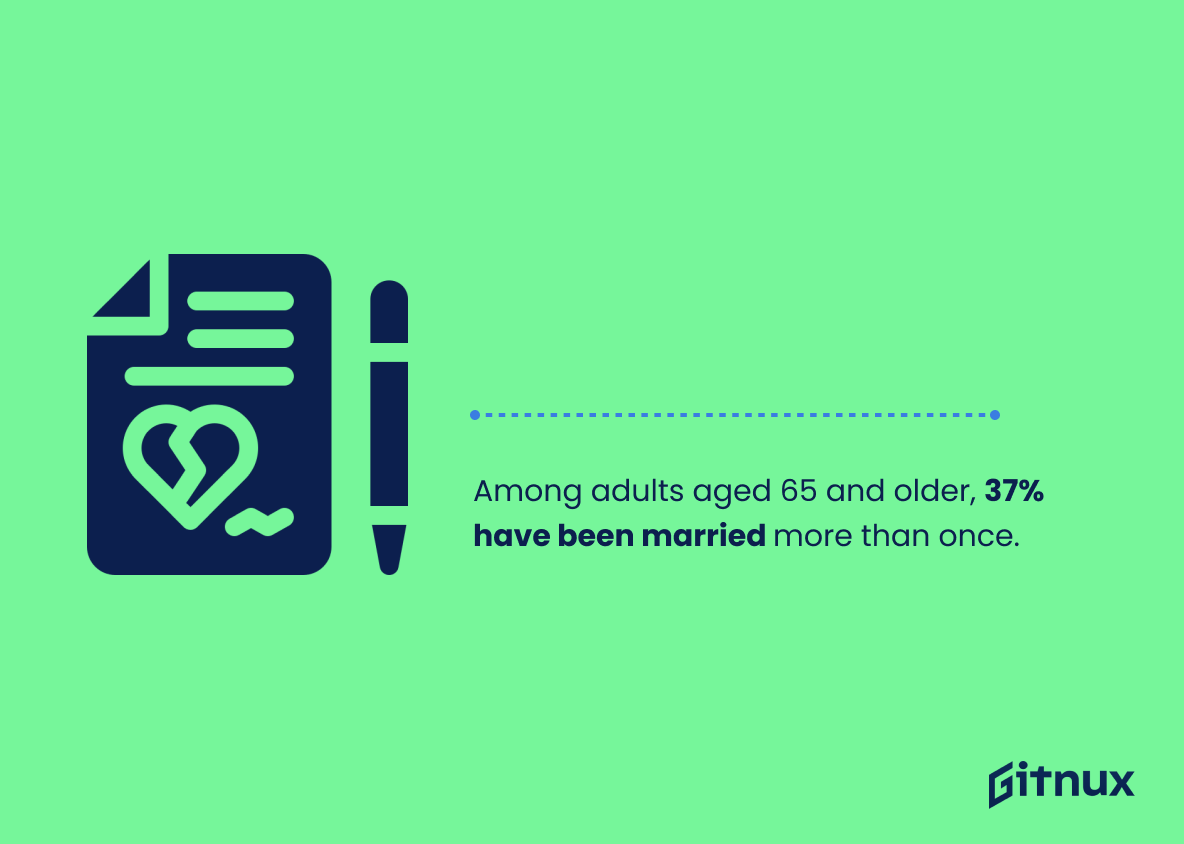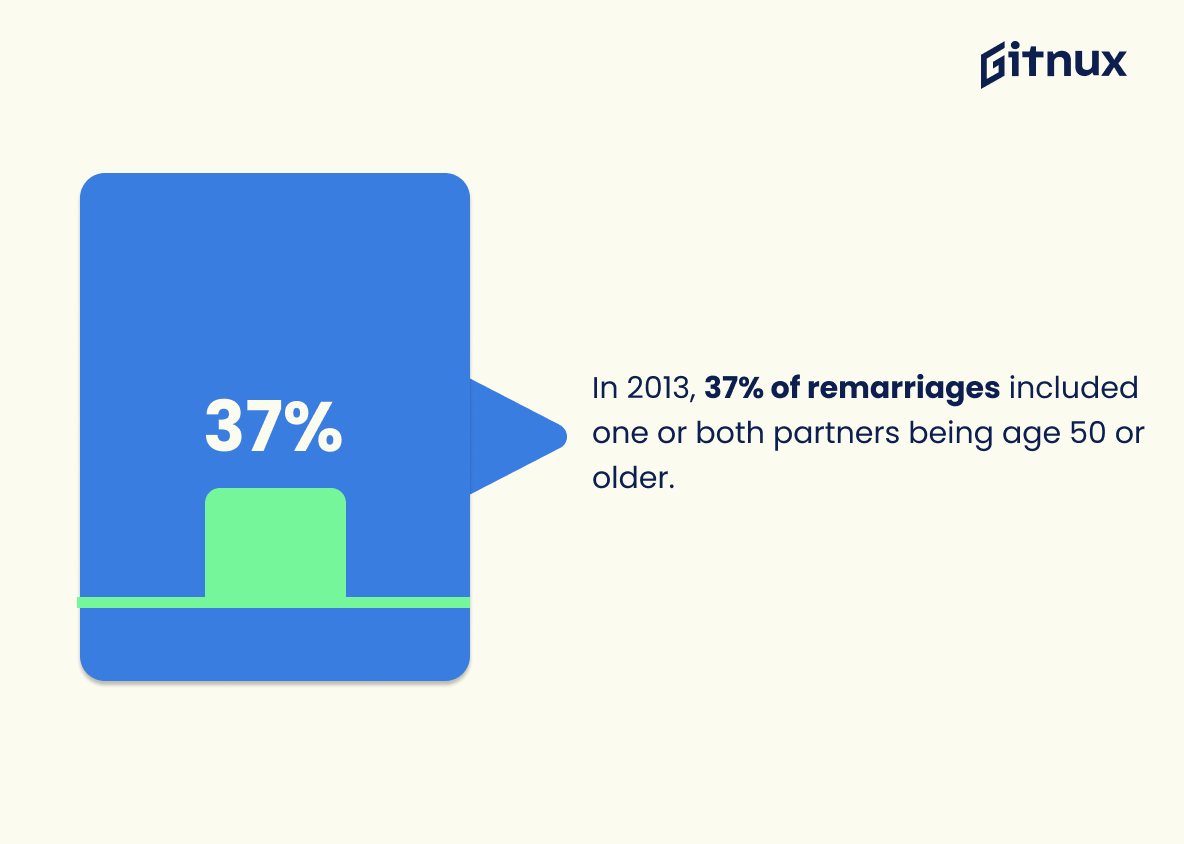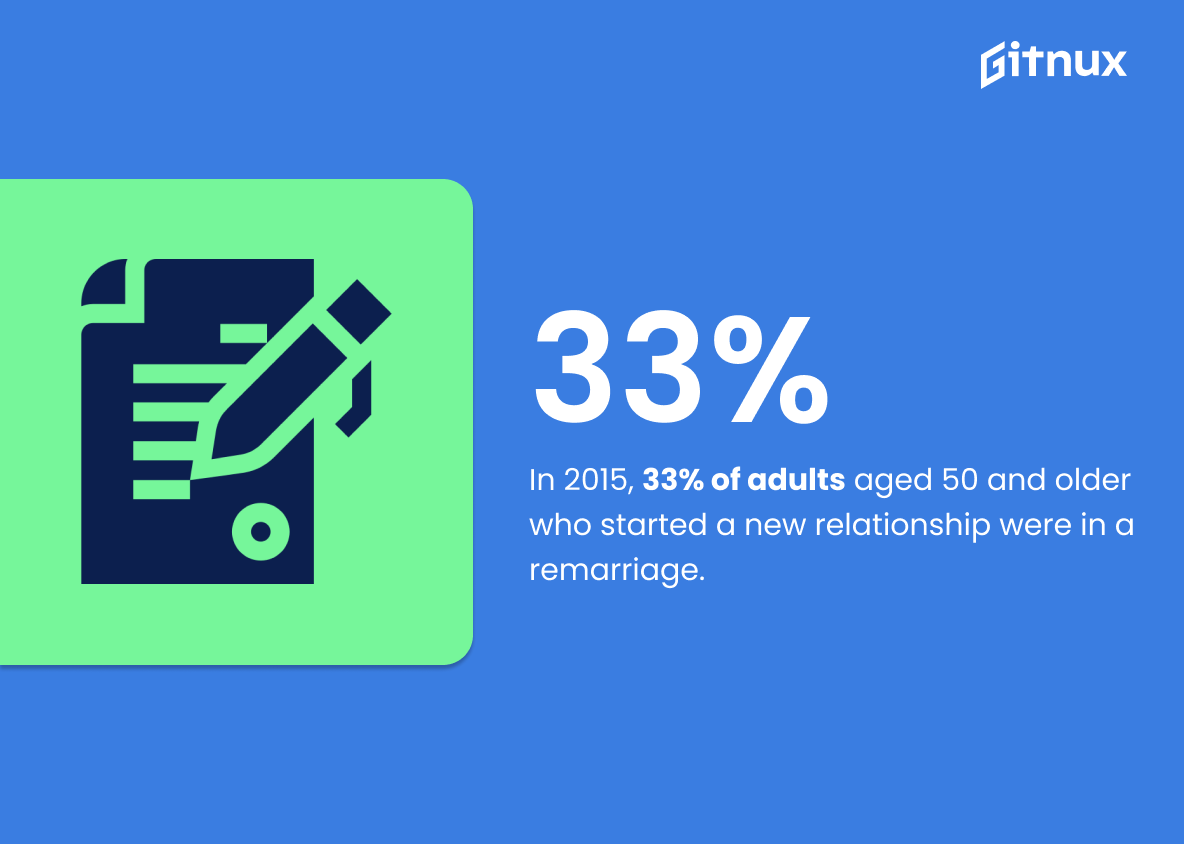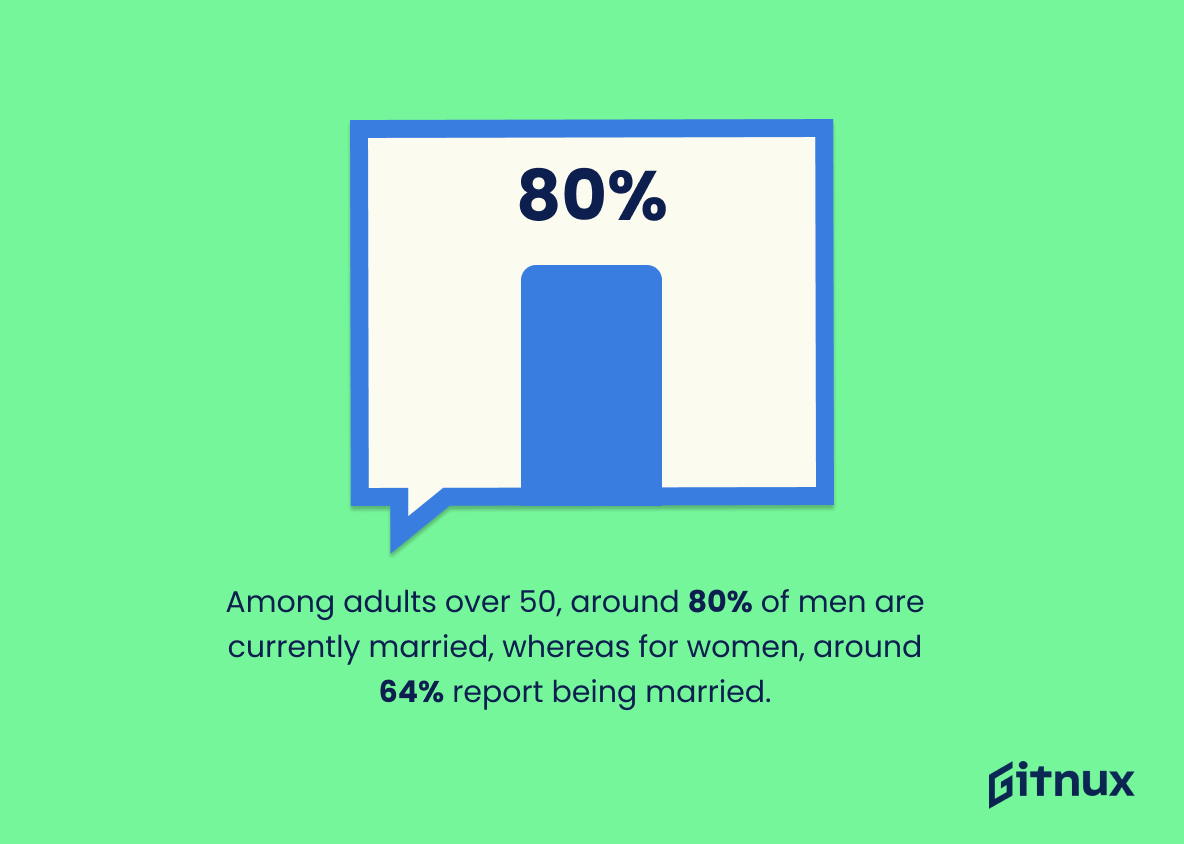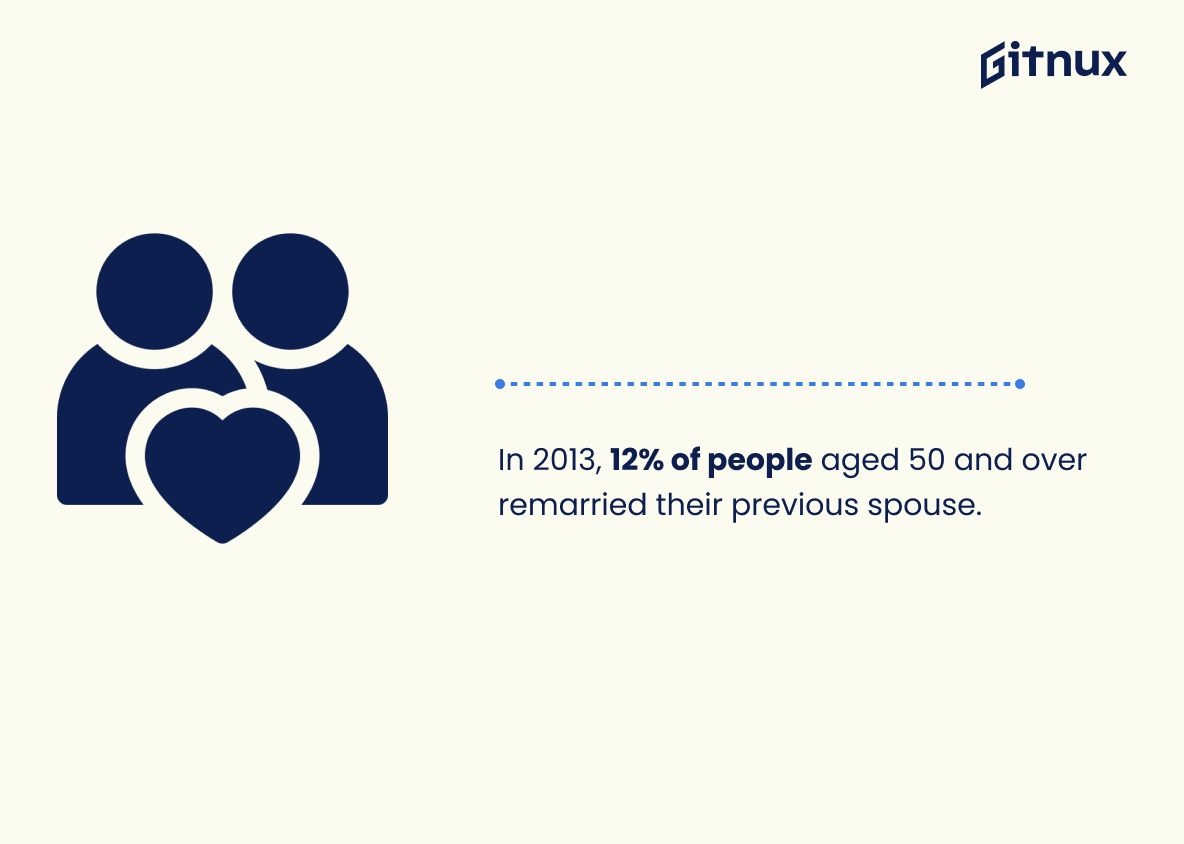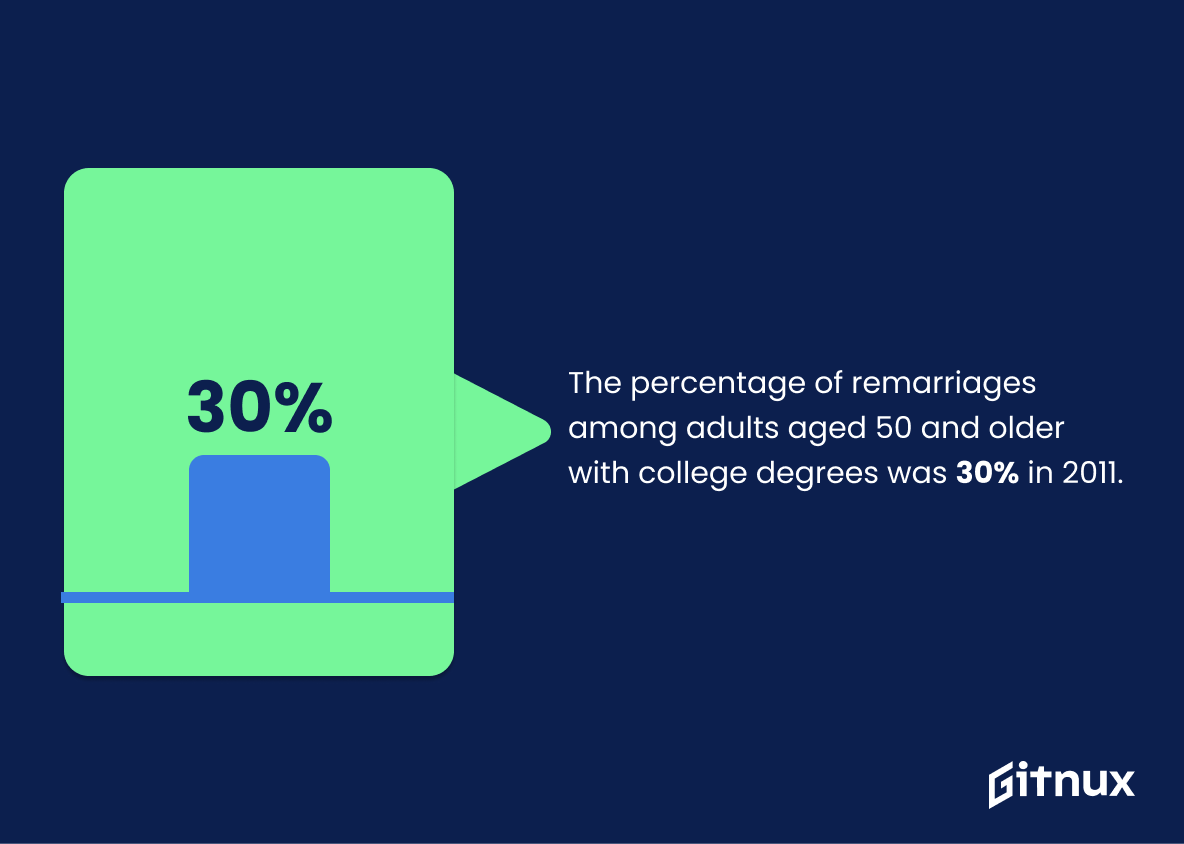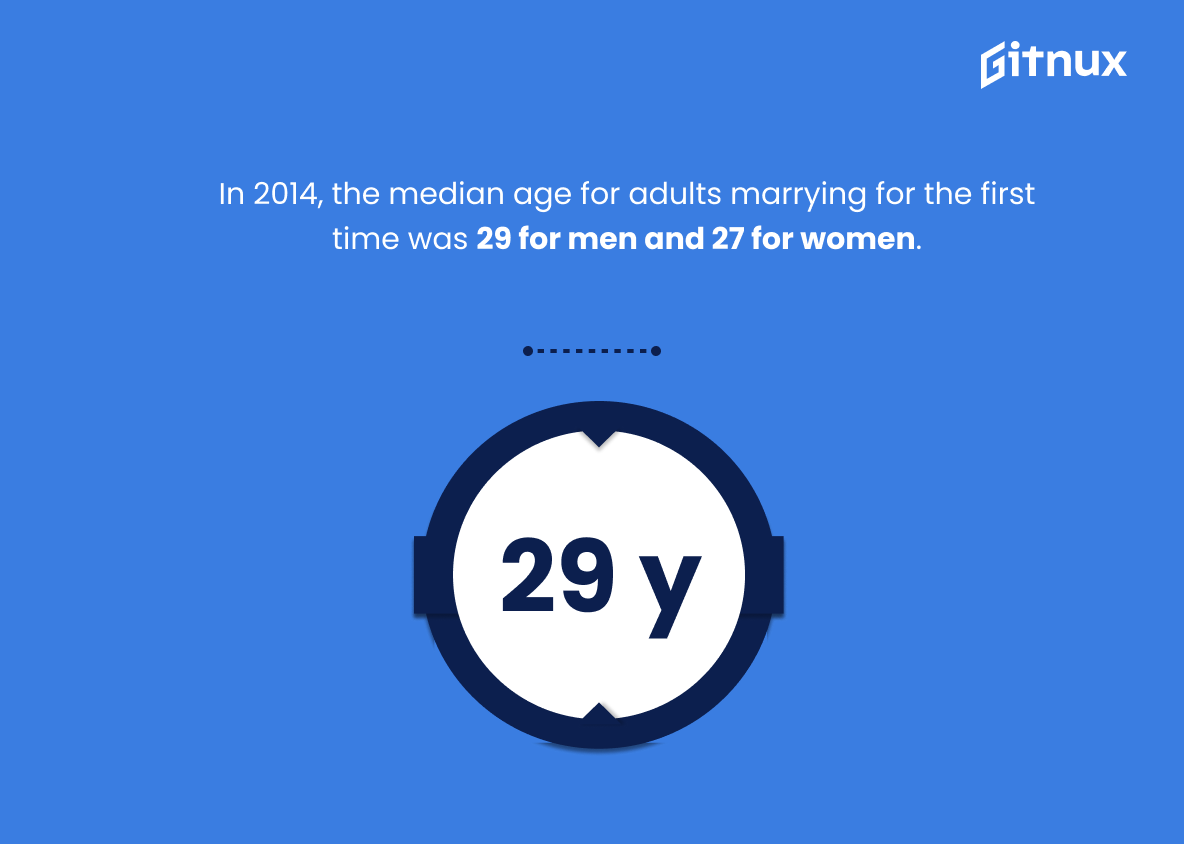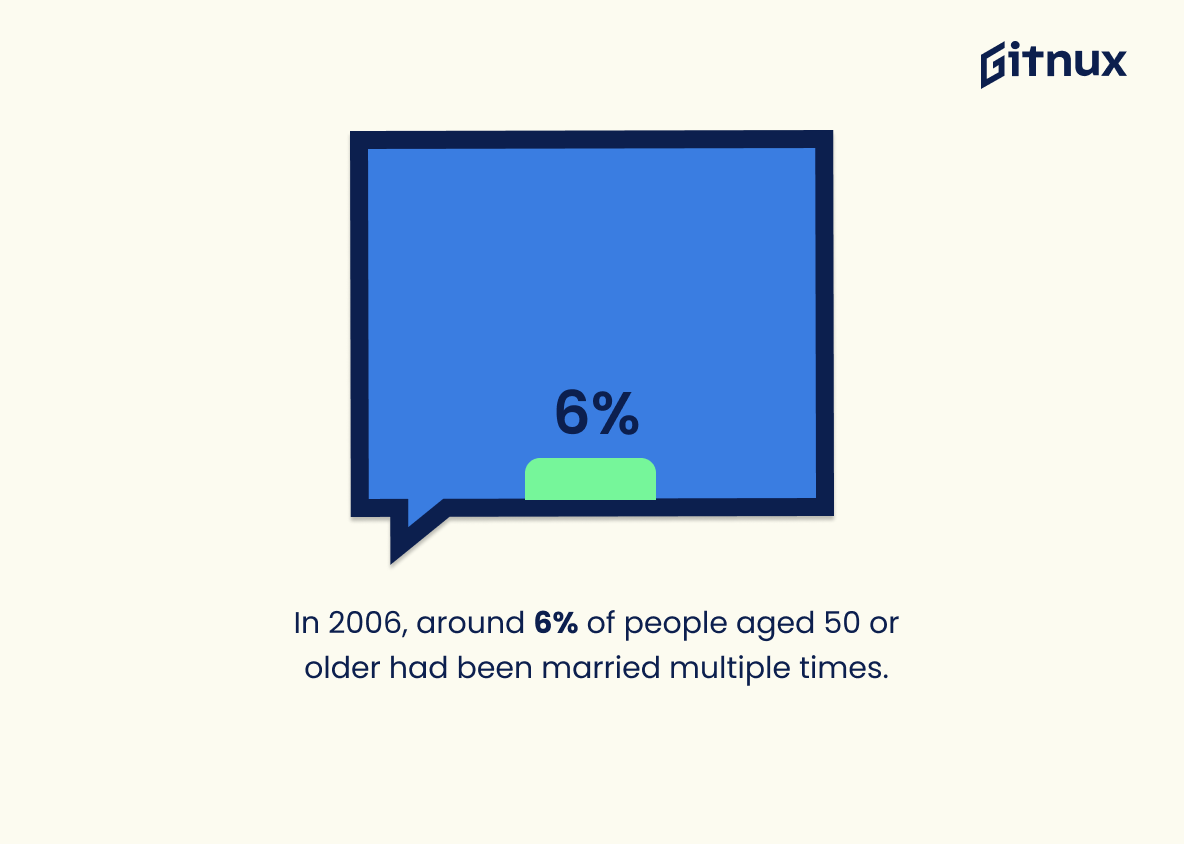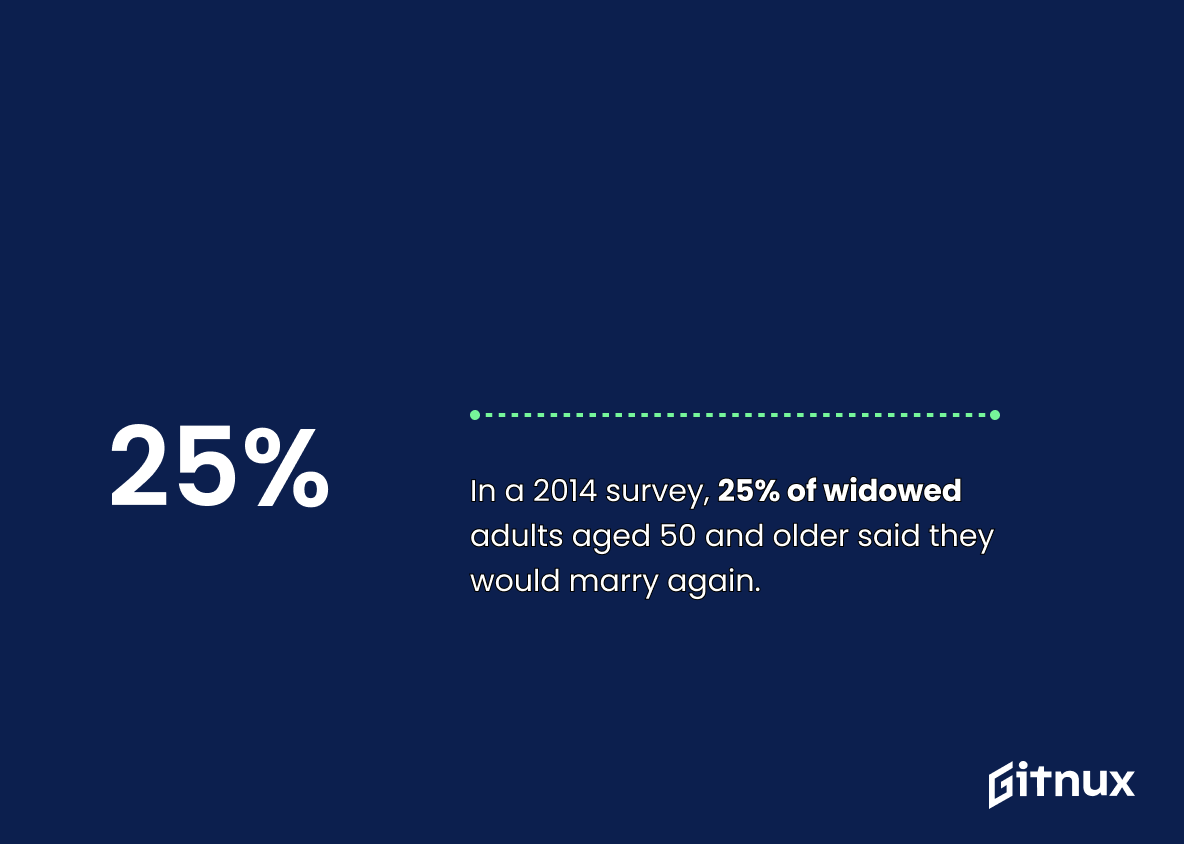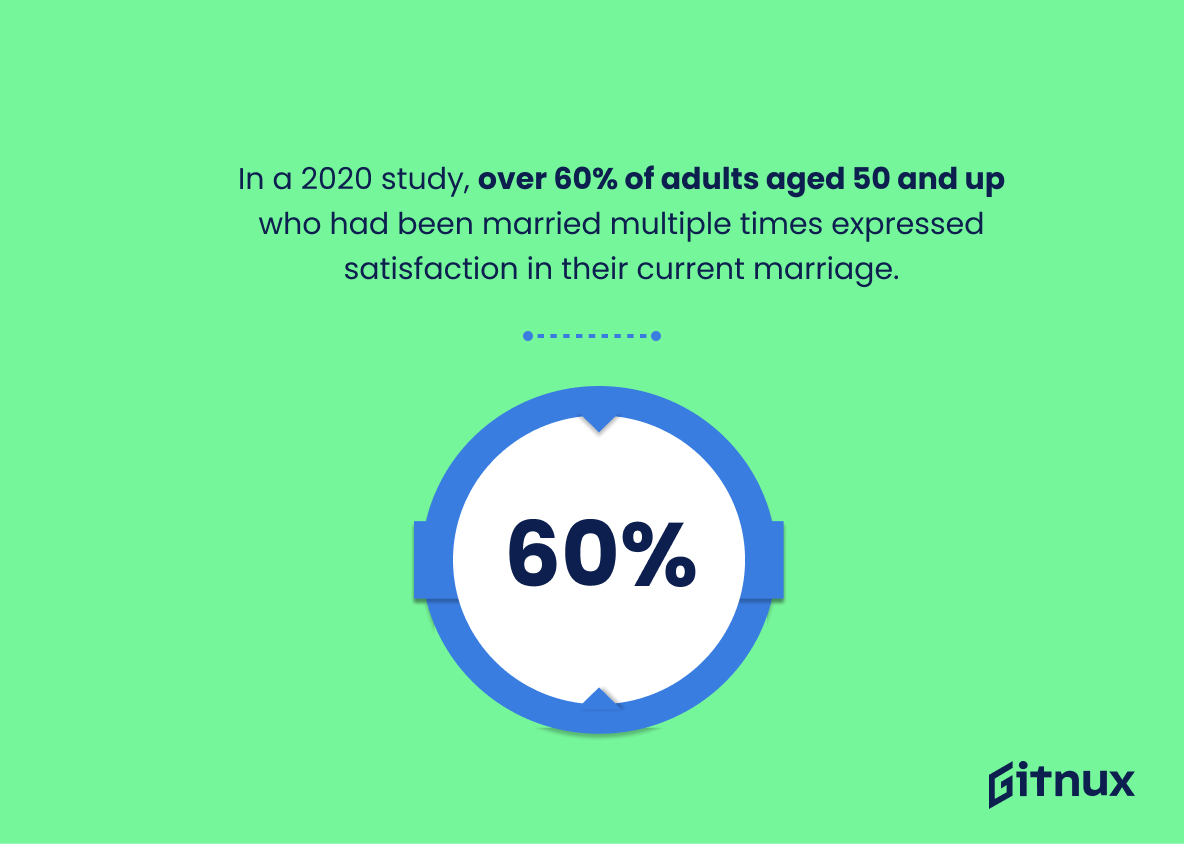Marriage after 50 is a growing trend in the United States. As people age, they are increasingly likely to remarry or enter into new relationships. This blog post will explore some of the statistics related to marriage and remarriage among adults aged 50 and older. We’ll look at data from various sources including Pew Research Center, AARP, U.S Census Bureau, National Center for Family & Marriage Research (NCFMR), Centers for Disease Control and Prevention (CDC) as well as other studies on this topic. The information presented here provides an overview of trends in later-life marriages over time so that readers can gain insight into how these dynamics have changed since 1960 up until 2020.
Marriage After 50 Statistics Overview
The divorce rate for adults ages 50 and older in remarriages is double the rate of those who have only been married once.
This statistic is a stark reminder of the challenges that come with remarriage after 50. It highlights the importance of taking the time to get to know one’s partner and to understand the complexities of a second marriage. It also serves as a warning to those considering remarriage to be aware of the potential risks and to take the necessary steps to ensure a successful union.
56% of adults aged 50 and older remarried in 2012.
This statistic is a powerful indicator of the prevalence of remarriage among adults aged 50 and older in 2012. It speaks to the fact that marriage after 50 is a reality for many, and that it is a growing trend. This statistic is important to consider when discussing the changing landscape of marriage after 50, and the implications it has for individuals and society as a whole.
Among adults aged 65 and older, 37% have been married more than once.
This statistic is a telling indication of the changing landscape of marriage after 50. It shows that a significant portion of adults aged 65 and older have experienced the joys and challenges of marriage more than once, suggesting that marriage is still a viable option for those in their later years.
In 2013, 37% of remarriages included one or both partners being age 50 or older.
This statistic is a telling indication of the growing trend of remarriage among those aged 50 and over. It speaks to the fact that marriage after 50 is becoming increasingly common, and that couples are finding love and companionship later in life. This statistic is a powerful reminder that age is no barrier to finding love and happiness.
The remarriage rate for adults aged 50 and older increased by 43% from 2008 to 2013.
This statistic is a powerful indicator of the changing attitudes towards marriage after 50. It shows that more and more adults in this age group are choosing to remarry, suggesting that marriage is becoming increasingly accepted as a viable option for those in their later years. This is an important development, as it demonstrates that marriage is no longer seen as a young person’s game, but rather a viable option for those of all ages.
In 2015, 33% of adults aged 50 and older who started a new relationship were in a remarriage.
This statistic is a telling indication of the prevalence of remarriage among adults aged 50 and older. It speaks to the fact that many individuals in this age group are not content to remain single, but instead are actively seeking out new relationships and, in many cases, remarrying. This is an important point to consider when discussing marriage after 50, as it shows that many individuals in this age group are still interested in finding a partner and starting a new life together.
Among adults over 50, around 80% of men are currently married, whereas for women, around 64% report being married.
This statistic is a telling indication of the gender gap in marriage after 50. It shows that men are more likely to be married than women, which could be due to a variety of factors such as societal expectations, economic stability, and cultural norms. This statistic is important to consider when discussing marriage after 50, as it provides insight into the different experiences of men and women in this age group.
In 2013, 12% of people aged 50 and over remarried their previous spouse.
This statistic is a telling indication of the resilience of marriage after 50. It speaks to the fact that, even after a divorce, many couples are willing to give their relationship another chance and work towards a successful marriage. This statistic is a testament to the power of love and commitment, and serves as an inspiring reminder that it is never too late to find happiness in a relationship.
The percentage of remarriages among adults aged 50 and older with college degrees was 30% in 2011.
This statistic is a telling indication of the prevalence of remarriages among adults aged 50 and older with college degrees. It speaks to the fact that, even in an age where marriage is often seen as a less-than-permanent commitment, many individuals in this demographic are still willing to take the plunge and try again. This statistic is a valuable insight into the attitudes and behaviors of this particular age group, and is an important piece of the puzzle when it comes to understanding marriage after 50.
In 2014, the median age for adults marrying for the first time was 29 for men and 27 for women.
This statistic is a telling indication of the changing landscape of marriage in the modern age. It highlights the fact that more and more adults are waiting until later in life to tie the knot, which is a trend that has been steadily increasing over the past few decades. This is an important point to consider when discussing marriage after 50 statistics, as it provides insight into the changing attitudes and expectations of marriage in today’s society.
In 2004, 17% of adults aged 50 or older had been married three or more times.
This statistic is a telling indication of the changing landscape of marriage after 50. It speaks to the fact that more and more adults in this age group are choosing to remarry multiple times, suggesting that marriage is still a viable option for those in their later years. This statistic is a valuable insight into the changing attitudes and behaviors of adults over 50 when it comes to marriage.
In 2006, around 6% of people aged 50 or older had been married multiple times.
This statistic is a telling indication of the changing landscape of marriage after 50. It suggests that more and more people are opting to remarry, either due to the dissolution of a previous marriage or simply because they are looking for a new partner. This statistic is a reflection of the shifting attitudes towards marriage and relationships in the older age bracket, and is an important factor to consider when discussing marriage after 50.
In a 2014 survey, 25% of widowed adults aged 50 and older said they would marry again.
This statistic is a powerful reminder that, even after the loss of a spouse, many people aged 50 and older still have the desire to find love and companionship again. It speaks to the resilience of the human spirit and the capacity for love that exists in all of us.
In a 2013 survey, 83% of adults aged 50 and older were in their second marriage, while 17% were in their third marriage or beyond.
This statistic is a telling indication of the prevalence of remarriage among adults aged 50 and older. It speaks to the fact that many individuals in this age group are not content to remain single after the dissolution of their first marriage, but instead are willing to take a chance on love again. This statistic is an important piece of the puzzle when it comes to understanding the marriage landscape for those over 50, and is thus a valuable addition to any blog post about Marriage After 50 Statistics.
In a 2020 study, over 60% of adults aged 50 and up who had been married multiple times expressed satisfaction in their current marriage.
This statistic is a testament to the fact that marriage after 50 can be a successful and fulfilling experience. It shows that even if one has had multiple marriages in the past, they can still find joy and satisfaction in their current marriage. This statistic is a reminder that it is never too late to find love and happiness in a committed relationship.
Conclusion
Recent data reveals a growing trend of marriage among individuals over 50. In 2016, remarriage rates for adults aged 55 to 64 climbed to 67% from 50% in 1960. In 2018, 76% of married adults aged 42-64 had only one marriage, while 57% of divorced individuals aged 50+ remarried.
The divorce rate is twice as high for those with multiple marriages compared to those married once. A range of 6% to 56% reported remarriage between 2012 and 2020. Significantly, 80% of men and 64% of women over 50 are married, with 25% of widowed individuals seeking remarriage. Most are on their second marriage, 60% prefer cohabitation, and over 60% are content with their marital status. This underscores a shift towards more marriages and remarriages among those aged 50 and above.
References
0. – https://www.www.bls.gov
1. – https://www.www.census.gov
2. – https://www.www.bgsu.edu
3. – https://www.www.pewsocialtrends.org
4. – https://www.www.pewresearch.org
5. – https://www.link.springer.com
6. – https://www.spectrum.library.concordia.ca
7. – https://www.ncea.acl.gov
8. – https://www.www.aarp.org
9. – https://www.www.cdc.gov
10. – https://www.www.tandfonline.com
11. – https://www.www.multivu.com
